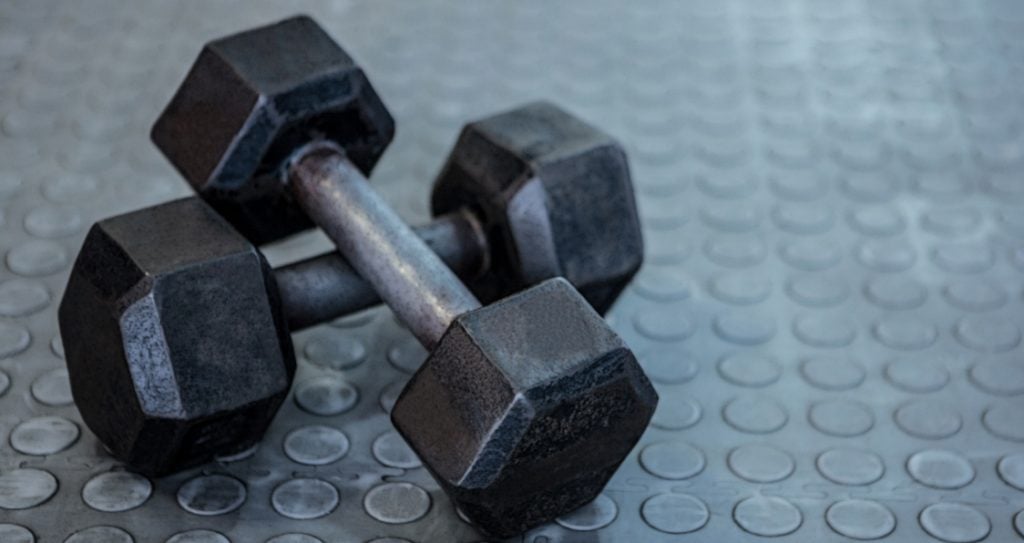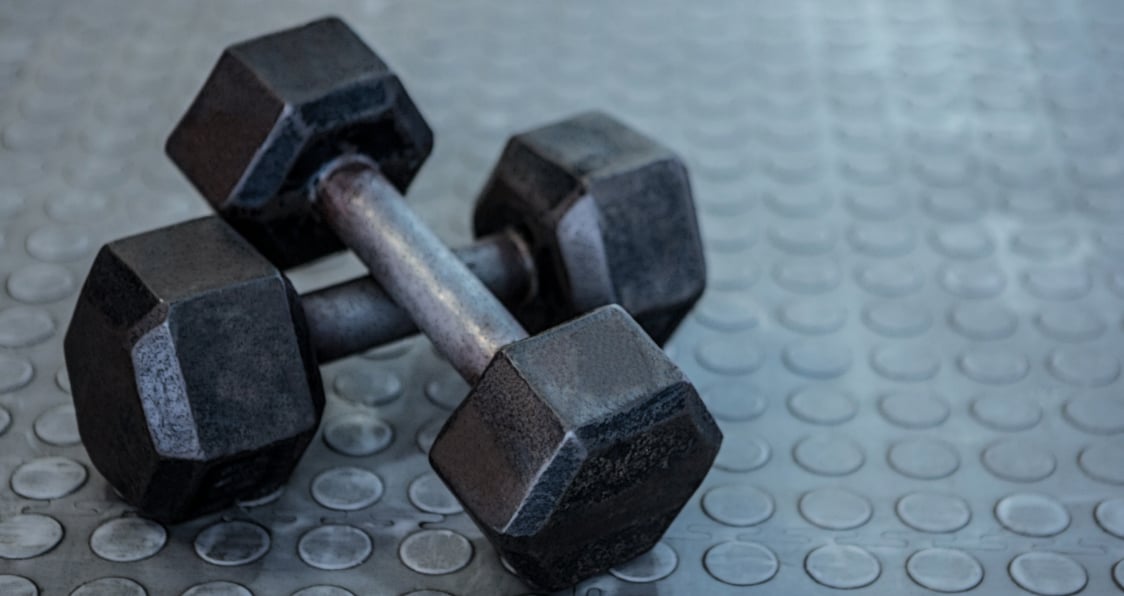The Influence of the Deadlift on Overall Health
When it comes to fundamental resistance exercises, the deadlift is up there as one of the most essential.
For so many individuals, the back can be problematic – specifically the lower back. Pain is a fairly common occurrence which often result from weakness across a number of posterior chain muscles.
Often these vital posterior chain muscles are underused and neglected in day-to-day life and also during strength training.
In addition to this, sitting for prolonged periods and poor posture can contribute further to back problems and pain.
The deadlift effectively recruits and develops all muscles of the posterior chain – from the calves in the leg, right up to the traps in the upper back – and effectively reduce low back pain (1).
The deadlift places the greatest load on the lower back, glutes and hamstrings but requires a large degree of core engagement too (2).
Effectively strengthening all of these muscles and building lower back resilience can help to improve posture, reduce pain and eliminate problems.
The Benefit of Conjugate Training
Most individuals concentrate on conventional strength training which involves using a select number of heavy compound exercises to develop performance and enhance health.
While this method undoubtedly reaps reward in terms of strength and size gains, it may lead to over development of specific muscle groups and consequently lead to imbalances.
Research has suggested that muscle imbalances can increase the risk of sustaining an injury (3) – something that we all want to avoid.
There will undoubtedly be times in your training journey where it will be necessary to change your training styles and exercise selections.
For example, it may be necessary to do this as a method of working around an injury or for moving beyond a strength plateau.
One highly effective training method is conjugate training which incorporates an array of different exercises and styles in order to develop a more-rounded physique.
The varied nature of the workouts not only means that strength levels continue to rise but also that the risk of injury is substantially lower and promotes longevity.
Building Power with the Dumbbell Deadlift
A number of deadlift variations do put a lot of stress on the lower back, however, it is possible to save your back with dumbbell deadlifts.
The dumbbell deadlift is one of the greatest conjugate exercises around which has made a re-emergence in recent times having being made popular back in the 80’s.
Most recently, powerlifter and strongman Nick Best posted a training video on Instagram in which he pulls a 150 pound dumbbell deadlift.
It is no coincidence that Nick Best uses these methods and has won a powerlifting championship and still competes in World’s Strongest Man competitions – all while being over the age of 40.
When it comes to the dumbbell deadlift, many individuals view it as inferior to the barbell deadlift and believe that it is really for novices and lightweights.
However, the dumbbell deadlift and conjugate training have successfully been used over the years to successfully train both strongmen and powerlifters.
Many hardcore gyms have a range of heavy dumbbells (range up to as much as 250 pounds!) to make the dumbbell deadlift an extremely challenging, yet rewarding, exercise.
The dumbbell deadlift works particularly well as a finisher at the end of a tough leg workout – either singles or for reps.
Not only will you efficiently be building strength, it is also a fun way to end a session. In addition, if you have a training buddy, it can also provide some friendly competition to push you further.
Developing Range of Motion Through Dumbbell Deadlifts
Conjugate training exercises tend to work through a larger range of motion in comparison to traditional strength exercises.
Because the range is increased significantly, the weight that is being used should be reduced accordingly.
Avoid making the mistake of using the same amount of weight as you would with traditional training as this may lead to deviations in form and consequent injury.
The extended range of motion will not only improve strength (4) but will also promote joint health and prevent muscle tightness.
The dumbbell deadlift specifically will increase the strength and flexibility of the glutes, hamstrings and hips which are areas that typically tighten up with traditional style workouts.
There are two common methods of completing the dumbbell deadlift; either from a dead start or from the hang position.
The hang position is best when completing Romanian deadlifts which is a great variation that really hits the hamstrings hard.
To maximize the stress placed on the hamstrings, the legs should be kept relatively straight throughout the entirety of the exercise.
Remember to drive the chest up and engage all core musculature in order to prevent the back from rounding and protect the spine from injury.
Meanwhile, the dead start method involves an extended range of motion as the dumbbells must be pulled from and returned to the floor with each rep.
A conventional barbell deadlift will start with the bar at approximately shin-height as the weight plates lift the bar off the floor.
The dumbbells however will start down just above the ankles and force the performer to drop significantly deeper in order to to pick up the weight.
This extended range effectively targets the oblique muscles, glutes and hip musculature to a greater degree.
For true conjugate training, look to increase the range of motion as far as possible. It is possible to manipulate this by utilizing a number of different methods.
For example, create a deficit by standing on weight plates, utilize rep tempo variations or even consider looping mini-bands around the dumbbells and the ankles.
How to Perform the Dumbbell Deadlift
In addition to the clear range of motion differences between the two exercises, the positioning of the load is also different.
For the barbell deadlift, the load is placed to the front of the body whereas during the dumbbell deadlift, the weights are held in both hands and are positioned to the sides of the body.
Therefore, when performing the dumbbell deadlift, start by assuming a hip-width stance and place the dumbbells on the floor just outside the feet.
Push the chest up and pull the shoulder blades together before pushing the hips backwards and bending at the knees to bring you down toward the floor.
In this position, the hips should be higher than the knees and the back should remain flat.
Grip the dumbbells hard and ensure that the core is still engaged. Then, drive hard through your heels and rise up to standing, keeping the dumbbells tight to the body throughout.
Ensure you squeeze the glutes together tightly at the top of the movement. Reverse the entire movement so that the dumbbells return to the floor.
Dumbbell Deadlift Finishers
As mentioned, the dumbbell deadlift is a superb way to finish a workout. The following two finishers can easily be applied to the majority of strength-based training programs.
1) Max Effort (Deadlift) – 2 heavy sets of 20 reps
On training days which involve heavy barbell deadlifts, look to complete this finisher to hit the lower back and hamstrings.
There is little point in performing the exact same movement once again, therefore ensure that you use the RDL style with this finisher and not the dead start.
2) Max Effort (Squat) – 2 heavy sets of 10 reps (or less)
On training days involving heavy barbell squats, add in sets of heavy dumbbell deadlifts with a weight up to as much as 150 pounds.
If you are going heavier than 150 pounds, look to lessen the total number of reps to keep the risk of injury minimal and maintain form.
Sample Conjugate Training Program Using Dumbbell Deadlifts
Incorporating the dumbbell deadlift does not have to complicated. Here is how your max effort sessions for both the squat and deadlift may look.
Max Effort (Squat)
| Exercise | Sets x Reps |
| Barbell Squat | 5 sets / Working up to 1 Rep Max |
| Dumbbell Lunge | 4 x 6 – 8 |
| Banded Hamstring Curls | 3 x 12 – 15 |
| Ab Wheel Rollouts | 3 x 12 – 15 |
| Dumbbell Deadlift (Conventional) | 2 x <10 |
Max Effort (Deadlift)
| Exercise | Sets x Reps |
| Barbell Deadlift | 5 sets / Working up to 1 Rep Max |
| Glute-Ham Raises | 4 x 6 – 8 |
| Banded Leg Extensions | 3 x 12 – 15 |
| Pallof Press | 3 x 12 – 15 |
| Dumbbell Deadlift (RDL) | 2 x 10 – 20 |
Final Word
There certainly appears to be a degree of cynicism toward the dumbbell deadlift. This is undoubtedly unfounded as time and again it has proved to be a highly effective strength developer.
While there are a vast number of commonly used strongman specific exercises, such as the farmers walk and the trap bar deadlift, none of them appear to have the same level of impact in comparison to the dumbbell deadlift.
For more news and updates, follow Generation Iron on Facebook, Twitter, and Instagram.
References:
1-Berglund, Lars; Aasa, Björn; Hellqvist, Jonas; Michaelson, Peter; Aasa, Ulrika (2015-7). “Which Patients With Low Back Pain Benefit From Deadlift Training?”. Journal of Strength and Conditioning Research. 29 (7): 1803–1811. doi:10.1519/JSC.0000000000000837. ISSN 1533-4287. PMID 25559899.
2-Lee, Sangwoo; Schultz, Jacob; Timgren, Joseph; Staelgraeve, Katelyn; Miller, Michael; Liu, Yuanlong (2018-12). “An electromyographic and kinetic comparison of conventional and Romanian deadlifts”. Journal of Exercise Science and Fitness. 16 (3): 87–93. doi:10.1016/j.jesf.2018.08.001. ISSN 1728-869X. PMC 6323186. PMID 30662500.
3-Śliwowski, Robert; Jadczak, Łukasz; Hejna, Rafał; Wieczorek, Andrzej (December 2, 2015). “The Effects of Individualized Resistance Strength Programs on Knee Muscular Imbalances in Junior Elite Soccer Players”. PLoS ONE. 10 (12). doi:10.1371/journal.pone.0144021. ISSN 1932-6203. PMC 4667994. PMID 26630271.
4-Pinto, Ronei S.; Gomes, Naiara; Radaelli, Régis; Botton, Cíntia E.; Brown, Lee E.; Bottaro, Martim (2012-8). “Effect of range of motion on muscle strength and thickness”. Journal of Strength and Conditioning Research. 26 (8): 2140–2145. doi:10.1519/JSC.0b013e31823a3b15. ISSN 1533-4287. PMID 22027847.









